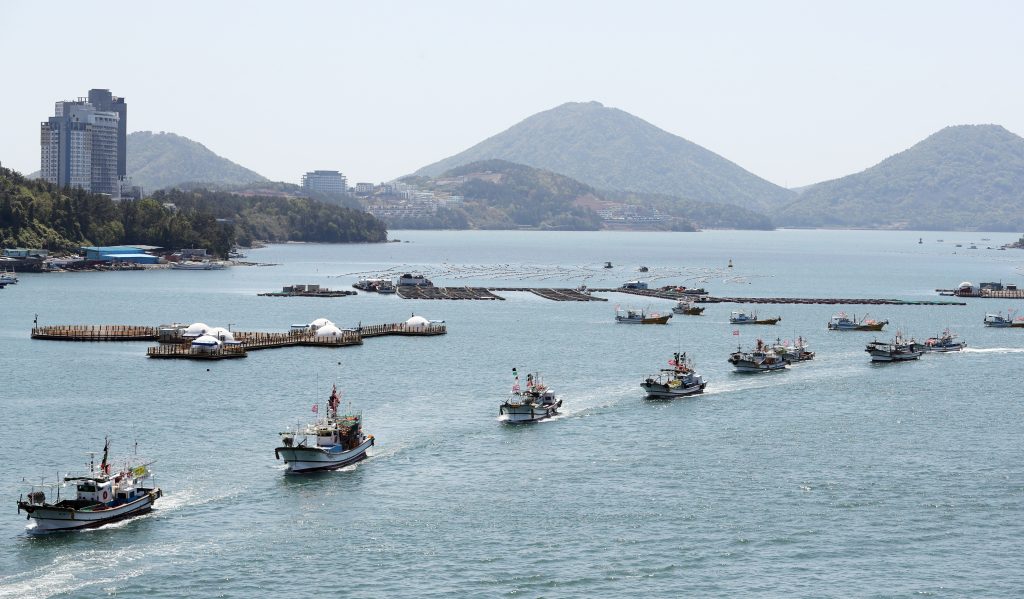April 18 2021 question: Is the processing technology reliable? Is Tepco credible? Can only drain the sea? – Relevant experts on Japan’s Fukushima nuclear waste water discharge reporter’s question
The Japanese government’s decision to discharge nuclear waste water from the Fukushima Daiichi nuclear power plant into the sea has caused widespread concern. Is Japan’s Fukushima nuclear wastewater treatment technology reliable? Is Tepco credible? In addition to the Fukushima nuclear waste water discharged into the sea, is there a better way for Japan to treat it? Can Fukushima nuclear waste water be compared to waste water discharged during normal operation of a nuclear power plant? Reporter 18 on the relevant issues to interview authoritative experts.
Q: How effective is the polynuclide processing system (ALPS) used in Japan?
Zhao Chengkun, executive vice-chairman of the Expert Committee of the China Nuclear Energy Industry Association, said Japan’s current treatment of waste water from the Fukushima nuclear accident is mainly through the multinuclide treatment system (ALPS) developed in 2012 to filter other nuclides other than radon.
On February 10, 2020, the ALPS Subcommittee, which is responsible for wastewater treatment research for the Fukushima nuclear accident in Japan, released a report showing that as of December 31, 2019, 73% of wastewater treated with polynuclide treatment systems (ALPS) still exceeds Japanese discharge standards. According to data released by Tepco, ALPS operation has so far repeatedly appeared after filtration wastewater iodine-129 nuclide activity concentration is still exceeding the standard, the effect did not meet expectations. Thus, even if technically feasible, engineering may not be fully achieved and maintain long-term stable operation.
At the same time, the main body of waste water treatment for the Fukushima nuclear accident in Japan is Tokyo Electric Power Company. The company has a long history of poor nuclear power operations and has a history of concealing false reports and tampering with information before and after the Fukushima accident. According to public reports, Tepco admitted in 2007 to tampering with test data and concealing reactor failures during 199 routine inspections, including the Fukushima Daiichi and No. 2 nuclear power plants, since 1977. The company has been slow to respond for a variety of reasons in the follow-up to the Fukushima disaster. After treatment of wastewater is not really able to meet the discharge standards, but also to mark a question mark.
Q: Can Fukushima nuclear waste water only be discharged into the ocean? Is there any better way to deal with it?
Liu Lin, a researcher at the China Atomic Energy Research Institute, said the treatment of wastewater from the Fukushima accident was not just a form of discharge into the ocean, but Japan had chosen the most beneficial form of marine discharge for the country.
Japan has proposed five options for wastewater treatment, such as hydrogen release, formation injection, underground burial, steam release and marine discharge. Stratito injection and underground burial are disposed of within Japan’s own territory, have no impact on other countries and are costly economically; In the absence of consensus with the international community and stakeholders and without exhausting all available means, Japan, for its own self-interest and on the grounds that storage space is limited, has chosen the least economically costly marine emissions programme and unilaterally decided to discharge the sea, passing on its responsibilities to all mankind, which is a very irresponsible act and setting a very bad precedent.
Internationally, both the Convention on Nuclear Safety and the Joint Convention on the Safety of Spent Fuel Management and the Safety of Radioactive Waste Management provide that the ultimate responsibility for the disposal of radioactive contamination rests with the polluter. The United Nations Convention on the Law of the Sea provides that States shall take all necessary measures to ensure that pollution caused by events or activities within their jurisdiction or control does not extend beyond the area where sovereign rights are exercised.
Japan should take prudent measures, with the participation and supervision of stakeholders, to choose the optimal way to dispose of waste water after nuclear accidents, in a manner that is accountable to its own people and the international community.
Q: Some netizens compare the waste water after the Fukushima nuclear accident in Japan with the waste water discharged from the normal operation of nuclear power plants in various countries.
Liu Xinhua, a researcher at the Center for Nuclear and Radiation Safety of the Ministry of Ecological Environment, said that the wastewater discharged by nuclear power plants, known as “normal liquid outflows from nuclear power plants”, is fundamentally different from the wastewater after the Fukushima nuclear accident in Japan.
One is that the sources are different. Japan’s Fukushima nuclear accident is the highest level of the International Nuclear Incident Classification Standard (INES) level 7 nuclear accident, core melting damage, radioactive material released in large quantities. The waste water from the Fukushima accident comes from cooling water injected into molten damaged cores after the accident, as well as groundwater and rainwater seeping into the reactor. The normal operation of liquid outflow from nuclear power plant mainly comes from process drainage, chemical drainage, ground drainage, shower laundry drainage and so on.
Second, the types of radionuclides are different. The Fukushima nuclear accident wastewater contains a variety of radionuclides present in molten cores, including some long-life fission nuclides, as well as highly toxic plutonium, thorium and other ultra-uranium nuclides. The normal liquid outflow from nuclear power plants does not come into direct contact with nuclear fuel cores and contains a small amount of fissile nuclides, which are almost free of ultra-uranium nuclides.
Third, the difficulty of handling is different. Japan uses polynuclide treatment system (ALPS) technology to purify waste water from the Fukushima nuclear accident, and ultimately whether it can meet emission standards still needs to be verified. Nuclear power plants strictly abide by international standards, the use of the best feasible technology to treat wastewater, after strict monitoring and compliance with organized emissions, the discharge of nuclides far below the prescribed control values.



